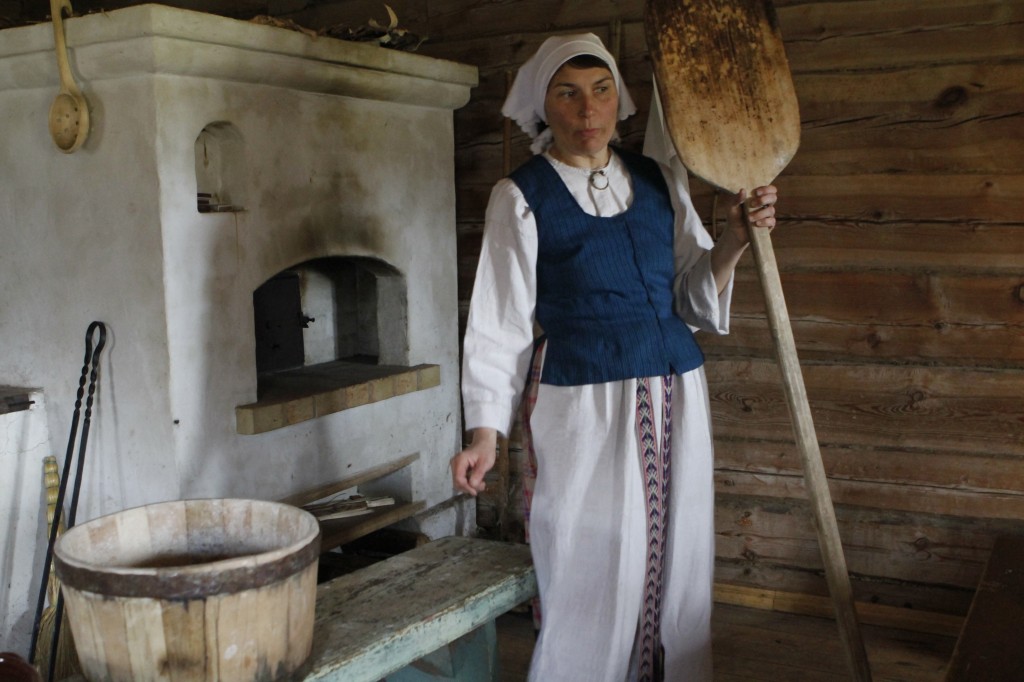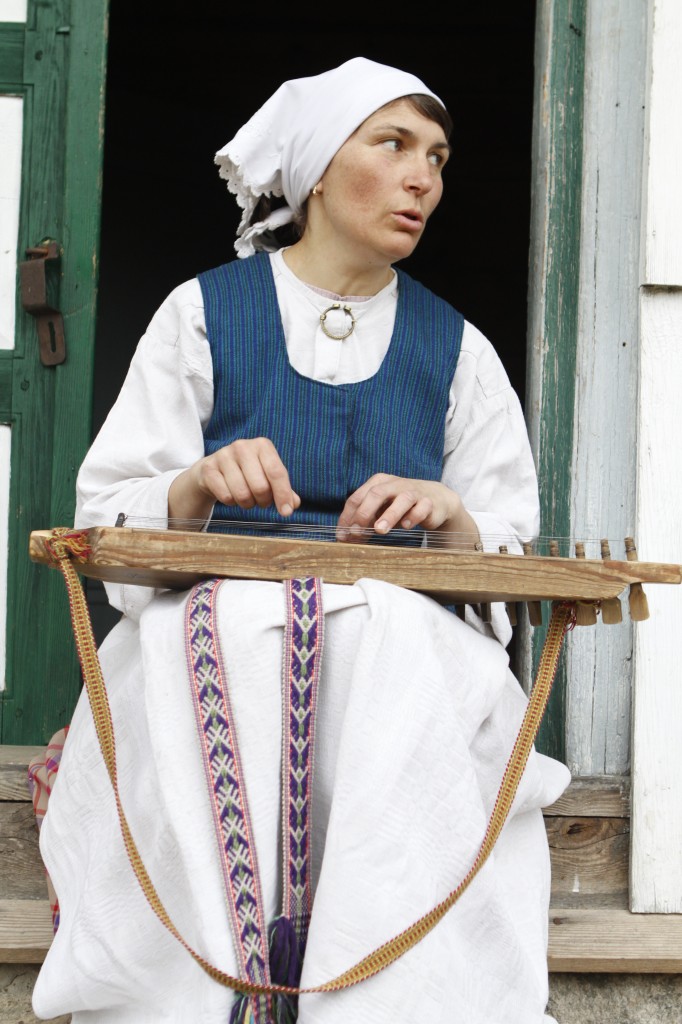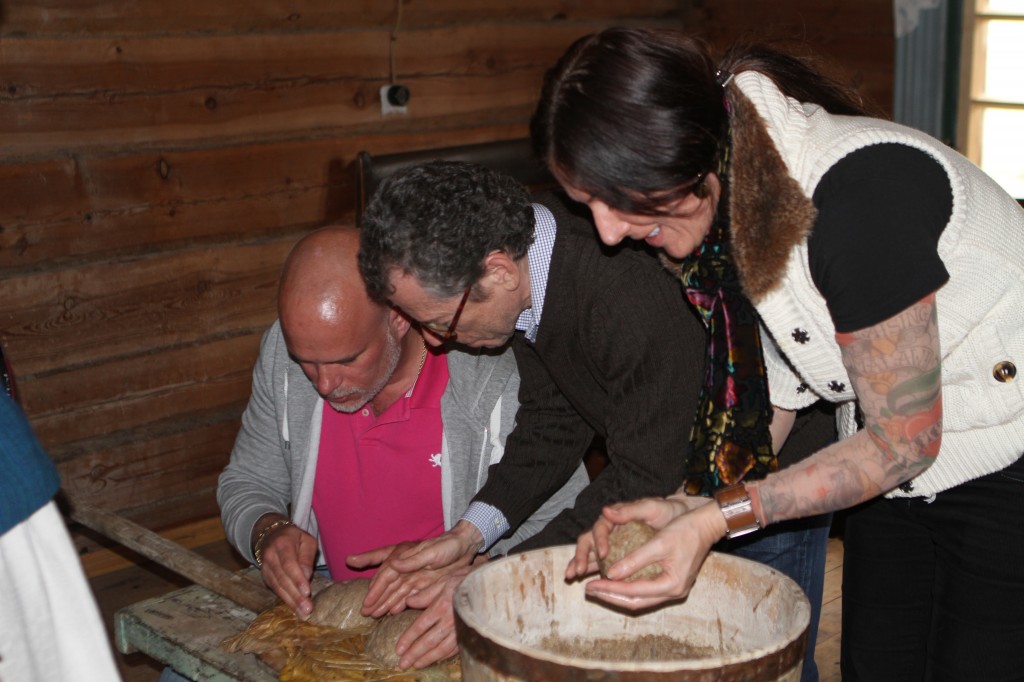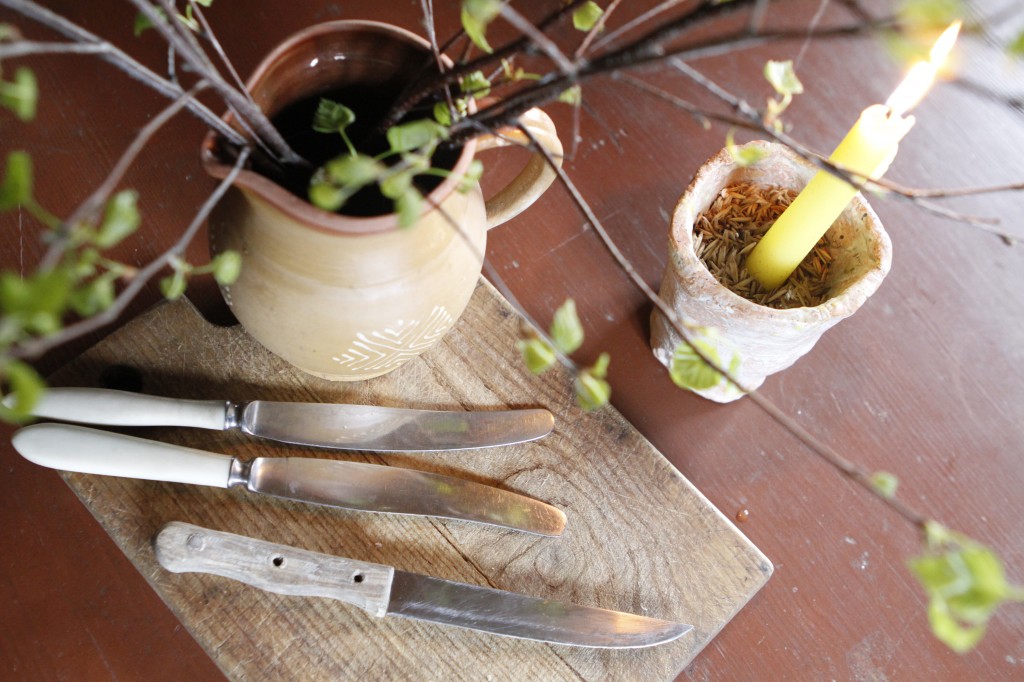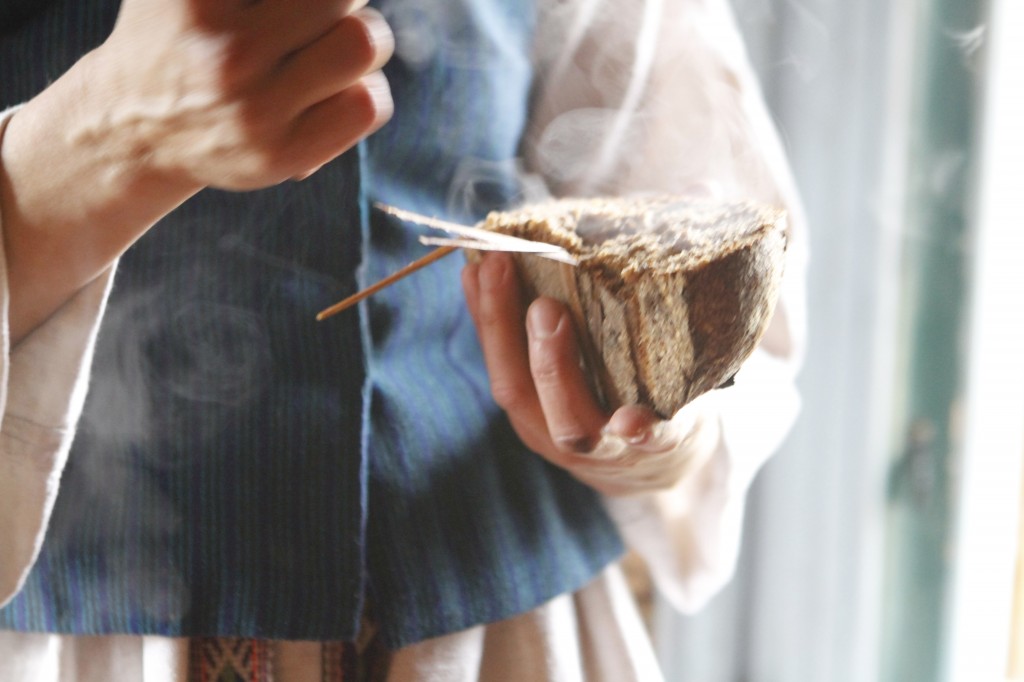I love instruments, especially ones I haven’t seen or heard before. In rural Lithuania when I ventured to Eastern Europe in April, I was mesmorized by the soothing sound of the Kanklės, which is a Lithuanian plucked string musical instrument from the zither family. The instrument is similar in construction and origin to the Latvian Kokle, Russian Gusli, Estonian Kannen and Finnish Kantele.
On a misty day where rain finally presented itself, I found myself in a rural village named Miciunai, where pastures went on for miles and green was plentiful. Farmland. Birch trees. Windmills. Nearby there’s a museum in a small cottage called Rumšiškės, which is about 20 kilometers from Kaunas, and in between the capital city of Vilnius and Kaunas.
With a sweet voice and dressed in traditional clothing, Lithuanian born Lorita sang softly as she played her Kanklės. Lorita’s main mission of course was not to dive deep into Lithuanian music history but to teach us about breadmaking.
Being the musician that I am, I had to learn more about this unusual musical instrument which looked like it came from another century. Apparently there are three basic regional types of kanklės, although there are variations within each type and each has its own distinct style.
- Northeastern Aukštaitija: The simplest and most ancient form, most frequently having five strings, and having a rounded bottom like a boat.
- Žemaitija and Northwestern Aukštaitija: Somewhat larger than those of Northeastern Aukštaitija, usually having between eight and twelve strings. They have a flat bottom, and in some cases, the shortest end is carved with the stylized figure of a bird or fish’s tail.
- Suvalkija and Northwestern Žemaitija: Usually the most highly decorated type, and often used in concert performances, the most prominent identifying feature is the addition of a carved spiral figure. Typically these instruments have between nine and thirteen strings.
“Traditional Lithuanian folk songs are very simple,” says Lorita. Folk songs were traditionally written and sang to create a mood to get people through a hard work day….there are songs about seasons, calendar songs, love songs, children’s songs, songs about shepherds, often sung during games and family events. People typically link arms and sit around the table, as if you’re creating a human chain.
Before and after music played, we learned about bread. Gathered around a heated stove, we sowed and kneaded dough, something that is considered a Lithuanian tradition and ritual. We had an opportunity to make and decorate our own loaf of bread. “Tasting bread is like tasting life,” they say.
The breadmaking process starts when the oven is already heated and the pastry is tanned in kneading-trough. We were given an opportunity to scrabble the ember with a rake and sweep the oven with a pine-brush.
While the bread bakes, we learn how bread was baked in the past, which wood was used for the bread baking and why. On a wooden platter rests “sweet flag,” which is a plant that is typically found on the shores of lakes and ponds. In Lithuania, Sweet Flag leaves are used to add a special flavor to dark bread, however I later learn that the plant is now becoming an endangered species.
While the bread bakes, we talk more about Lithuanian traditions, including how language has played a part. Apparently in more rural areas, where peasants lived and worked, the language didn’t really progress. “Lithuania was like a stone age language that doesn’t ever change,” she says. “Just like Latin didn’t develop since the 5th century since it was so rarely used, peasants didn’t move and their communications needs were simple. As a result, the language remained relatively primitive and didn’t evolve.”
I ask Lorita other questions, such as where she lives and what she does when she’s not educating children and foreigners about breadmaking. She lives in a village nearby and points to the car she used to drive herself to Rumšiškės.
While she says her English isn’t fluent, we’re able to communicate just fine, enough to learn that she does have Internet access at home and pays 20 Lithuanian Litas per month for the privilege, about $7.50. While it may not be as lightning fast as Comcast claims mine is, its a far cry from my $60+ a month bill for unreliable service that is down or unsuitably slow more than it’s not. And yes, she has email but doesn’t tweet or participate in social media, yet neither do my sisters who live in a small New England town. I learn that Rumšiškės only has about 1,700 people, sits on the Kaunas Reservoir and can claim the birthplace of well known Lithuanian poet Jonas Aistis.
As she returns to her music, we head out on a walk before the rains start tumbling down. While the day isn’t particularly cold, the soft candlelit room in this small breadmaking cabin is a welcome retreat after the mist coats our bodies.
Quaint, rustic and welcoming, the room awaits as the bread finishes baking. Heavier than what we are accustomed to finding on most American shop shelves, you don’t need much to be full especially with the creamy warm butter they serve it with, which has just a touch of sea salt on the top.
I couldn’t seem to remember which loaf I decorated and by that time, it didn’t matter all that much for the collection of them together was what you wanted to dive into even though it felt tragic to cut into such a beautiful display.
Is there anything quite as inviting as freshly baked hot bread?
Below is a video I shot of our experience:
Note: this experience was hosted by the Lithuanian Tourism but my opinions expressed are entirely my own. For more on Lithuania, visit our Lithuania page.

Renee Blodgett is the founder of We Blog the World. The site combines the magic of an online culture and travel magazine with a global blog network and has contributors from every continent in the world. Having lived in 10 countries and explored over 90, she is an avid traveler, and a lover, observer and participant in cultural diversity. She is also the founder of the Magdalene Collection, a jewelry line dedicated to women’s unsung voices and stories, and the award-winning author of the bestselling book Magdalene’s Journey
She is founder of Blue Soul Media and co-founder of Blue Soul Earth as well as the producer and host of the award-winning Blue Soul CHATS podcast, that bridges science, technology and spirituality. Renee also founded Magic Sauce Media, a new media services consultancy focused on viral marketing, social media, branding, events and PR. For over 20 years, she has helped companies from 12 countries get traction in the market. Known for her global and organic approach to product and corporate launches, Renee practices what she pitches and as an active user of social media, she helps clients navigate digital waters from around the world. Renee has been blogging for over 16 years and regularly writes on her personal blog Down the Avenue, Huffington Post, BlogHer, We Blog the World and other sites. She was ranked #12 Social Media Influencer by Forbes Magazine and is listed as a new media influencer and game changer on various sites and books on the new media revolution. In 2013, she was listed as the 6th most influential woman in social media by Forbes Magazine on a Top 20 List.
Her passion for art, storytelling and photography led to the launch of Magic Sauce Photography, which is a visual extension of her writing, the result of which has led to producing six photo books: Galapagos Islands, London, South Africa, Rome, Urbanization and Ecuador.
Renee is also the co-founder of Traveling Geeks, an initiative that brings entrepreneurs, thought leaders, bloggers, creators, curators and influencers to other countries to share and learn from peers, governments, corporations, and the general public in order to educate, share, evaluate, and promote innovative technologies.

